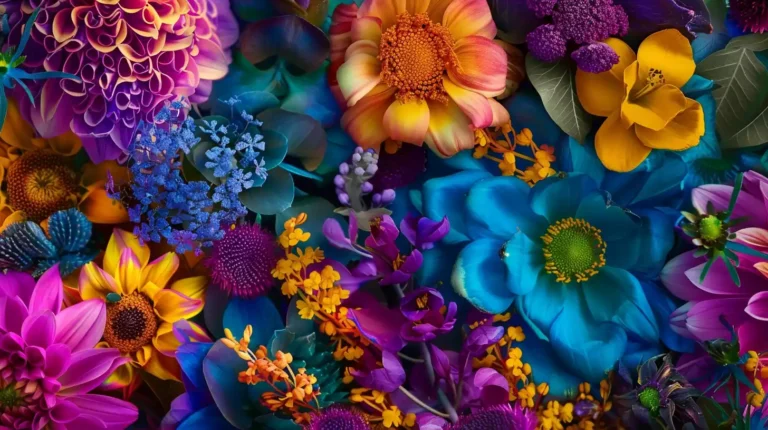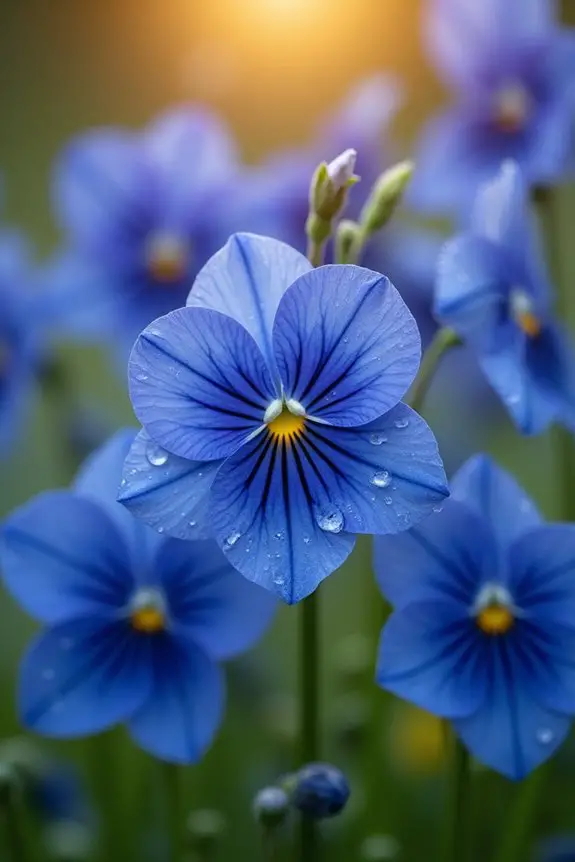10 Fun Facts About Daisies You Probably Didn’t Know
Daisies hold secrets that transform these cheerful white and yellow blooms into botanical marvels worth celebrating.
Each flower head contains hundreds of tiny blossoms working together in perfect harmony, while their petals close gently at night like sleepy eyes seeking rest. From ancient healing remedies to soil purification powers, these humble flowers carry surprising abilities that connect gardens to history, science, and pure natural wonder.
Ten remarkable facts await to reveal why daisies deserve far more admiration than their simple appearance might suggest.
Quick Summary
- Daisies are composite flowers with hundreds of tiny blooms: white ray flowers surround yellow disc flowers that produce seeds.
- The name “daisy” derives from Old English “dæges ēage” meaning “day’s eye” because they open at sunrise and close at sunset.
- Over 4,000 daisy species exist worldwide, thriving in diverse environments from deserts to alpine regions and cool woodlands.
- Daisies close their petals at night through water pressure changes in cells, protecting reproductive parts until dawn.
- Daisy leaves are edible and can be consumed in salads, while flowers are used in natural skincare for soothing properties.
Daisies Are Actually Hundreds of Tiny Flowers in One
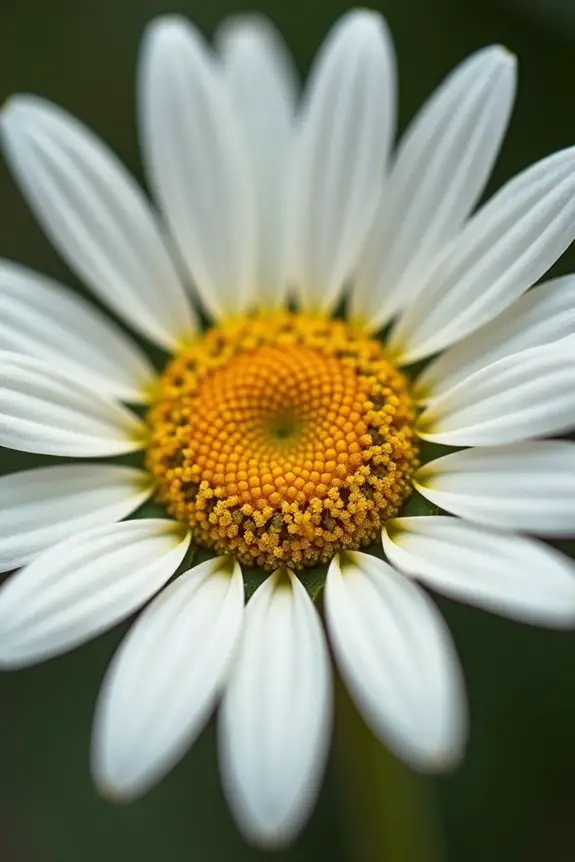
What appears to be a single cheerful daisy is actually a remarkable botanical illusion, a bustling community of hundreds of individual flowers working together in perfect harmony.
The white petals surrounding the golden center are called ray flowers, while the yellow disk contains numerous tiny tube-shaped disc flowers. This ingenious flower structure creates an irresistible landing platform for bees and butterflies.
Each miniature bloom produces its own seeds, transforming one daisy head into a spectacular seed factory.
This clever design maximizes pollinator attraction, ensuring these beloved flowers continue spreading joy across meadows and gardens worldwide for generations to come.
The Name “Daisy” Comes From “Day’s Eye”
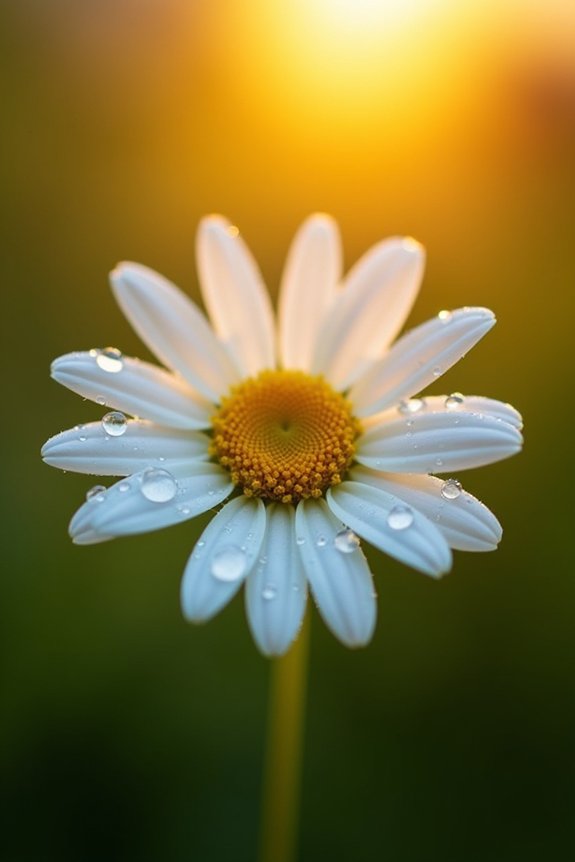
Beyond the daisy’s impressive composite structure lies an equally enchanting story hidden within its very name.
Etymology exploration reveals that “daisy” derives from the Old English phrase “dæges ēage,” meaning “day’s eye.” This poetic title captures how daisy petals unfold at sunrise and close at sunset, mirroring the opening and closing of an eye.
Flower symbolism throughout history has celebrated this solar connection, making daisies emblems of new beginnings and fresh starts.
The name perfectly encapsulates the flower’s behavior, transforming a simple botanical observation into timeless linguistic beauty that continues inspiring wonder today.
Daisies Can Close Their Petals at Night
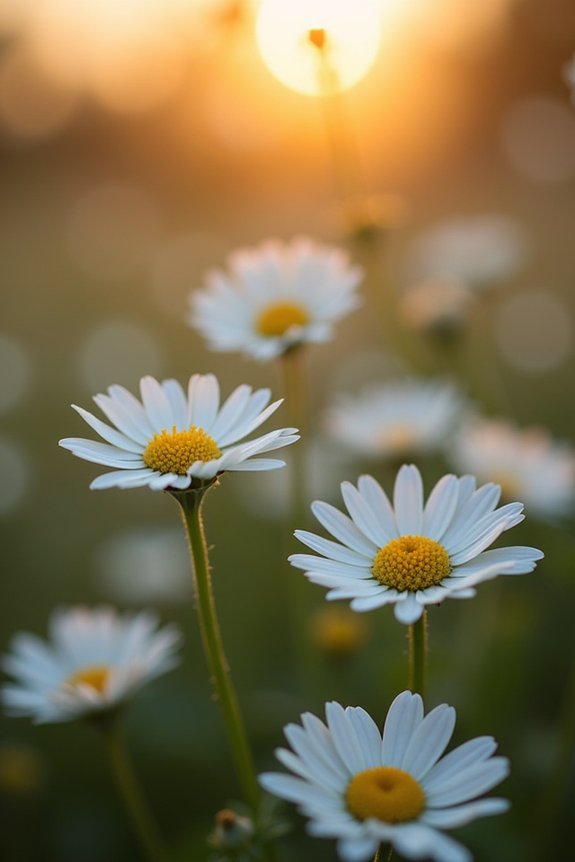
Nature’s twilight performance unfolds each evening as daisy petals respond to fading sunlight with graceful precision. This remarkable nighttime behavior protects the flower’s delicate reproductive parts from cool temperatures and morning dew.
The petal movement occurs through changes in water pressure within cells at the base of each petal, creating a gentle folding motion that draws petals inward. As dawn approaches, warmth and light trigger the reverse process, encouraging petals to open again.
This daily rhythm demonstrates nature’s perfect design, where even simple wildflowers possess sophisticated mechanisms to thrive through darkness and emerge renewed each morning.
There Are Over 4,000 Species of Daisies
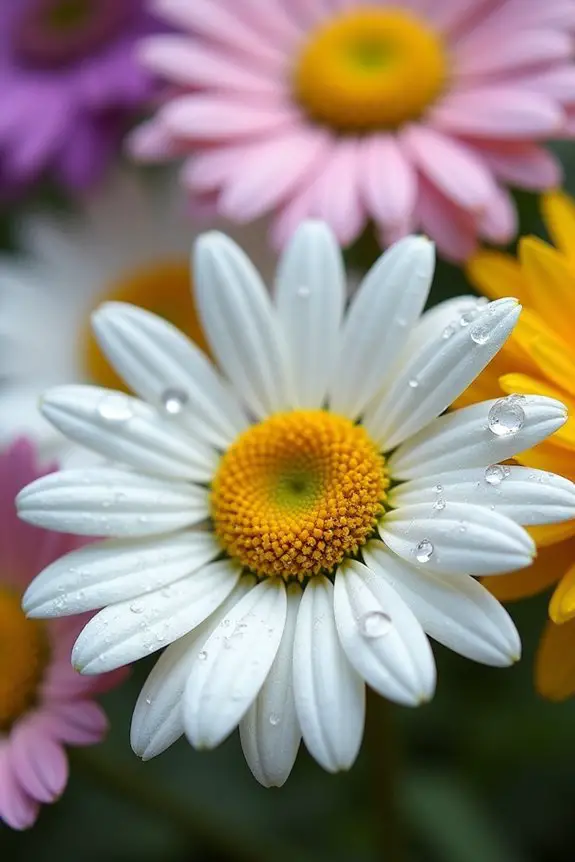
The daisy family stretches across continents and climates with an astonishing diversity of over 4,000 distinct species. This remarkable daisy diversity showcases nature’s boundless creativity, from tiny alpine blooms to towering sunflowers reaching toward endless skies.
Each species adapts perfectly to its environment, thriving in varied daisy habitats including sun-drenched meadows, misty mountain slopes, and coastal regions kissed by salty breezes. Some daisies flourish in desert heat with golden petals glowing like miniature suns, while others carpet cool woodland floors in delicate white and pink.
This extraordinary variety proves that daisies belong everywhere, transforming ordinary landscapes into dreamy botanical wonderlands.
Ancient Romans Used Daisies for Medical Treatments

Long before modern medicine filled pharmacy shelves with bottles and pills, Ancient Romans discovered extraordinary healing powers hidden within daisy petals and leaves.
These skilled healers crushed fresh white petals into soothing pastes, applying them directly to wounded soldiers returning from distant battlefields. The ancient remedies proved remarkably effective for reducing swelling and easing painful inflammation throughout the body.
Roman physicians documented extensive herbal uses, prescribing daisy-infused potions for digestive troubles and respiratory ailments.
Their medical scrolls revealed detailed instructions for creating healing tinctures, demonstrating profound respect for nature’s gentle yet powerful botanical gifts that flourished in Mediterranean gardens.
Daisies Inspired the Measurement of Small Distances

Medieval botanists revealed something extraordinary when measuring tiny plant specimens under primitive magnifying lenses during late afternoon study sessions.
They found that daisy petals provided the perfect standard for calculating miniature distances between delicate flower parts. These simple white blooms, with their golden centers glowing in candlelight, became nature’s rulers for scientific documentation.
The historical significance of daisy measurements transformed botanical research forever, allowing scholars to record precise observations in their leather-bound journals.
This charming practice inspired modern micrometer development, proving that even the humblest meadow flowers could revolutionize scientific advancement and spark innovation across centuries.
The Gerbera Daisy Is One of the World’s Most Popular Cut Flowers

From medieval laboratories to modern flower shops, daisies have captured hearts across every corner of the globe.
The gerbera daisy stands proudly among roses and tulips as one of the world’s most beloved cut flowers. With blooms spanning vibrant oranges, sunny yellows, passionate reds, and soft pinks, gerbera varieties transform ordinary spaces into cheerful sanctuaries.
Florists treasure these stunning flowers for their long vase life and bold presence in flower arrangements.
Their large, symmetrical petals radiate pure joy, making them perfect for celebrations, gifts, and everyday moments that deserve a touch of natural beauty and warmth.
Daisies Can Help Remove Toxins From Soil

Beyond their cheerful blooms and decorative charm, daisies possess a remarkable hidden talent that benefits the earth itself.
These resilient flowers excel at soil remediation, drawing harmful heavy metals and pollutants from contaminated ground through their roots and stems.
The environmental benefits prove truly extraordinary, as daisies naturally purify damaged landscapes while adding their signature white petals and golden centers.
| Toxin Removed | Remediation Efficiency |
|---|---|
| Lead | High absorption rate |
| Cadmium | Moderate to high capacity |
| Zinc | Effective natural extraction |
This process, called phytoremediation, transforms poisoned earth into healthier soil, creating hope for restoration projects worldwide.
The Daisy Chain Has Been a Childhood Tradition for Centuries
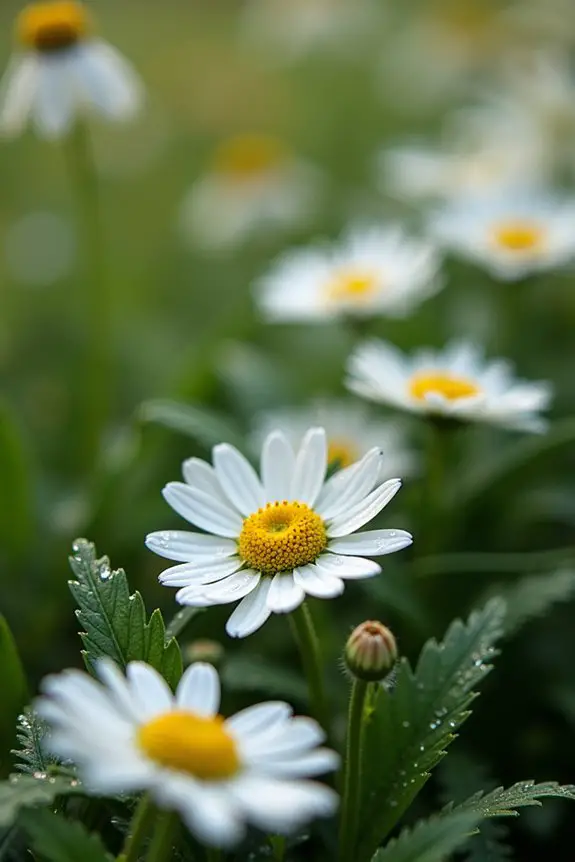
Generations of children have woven daisy stems together under sunny skies, creating delicate floral crowns and bracelets that celebrate nature’s simple beauty. This timeless craft connects young hands to centuries of tradition, transforming white petals and golden centers into wearable art.
The practice embodies daisy symbolism of innocence and purity, perfectly matching the wonder in children’s eyes. These childhood memories often resurface decades later, triggering nostalgia for sun-drenched afternoons spent in meadows.
The gentle activity teaches patience and creativity while fostering appreciation for natural treasures. Today’s children continue this beloved ritual, proving some joys remain wonderfully unchanged across generations.
Daisies Hold Different Meanings Across Cultures
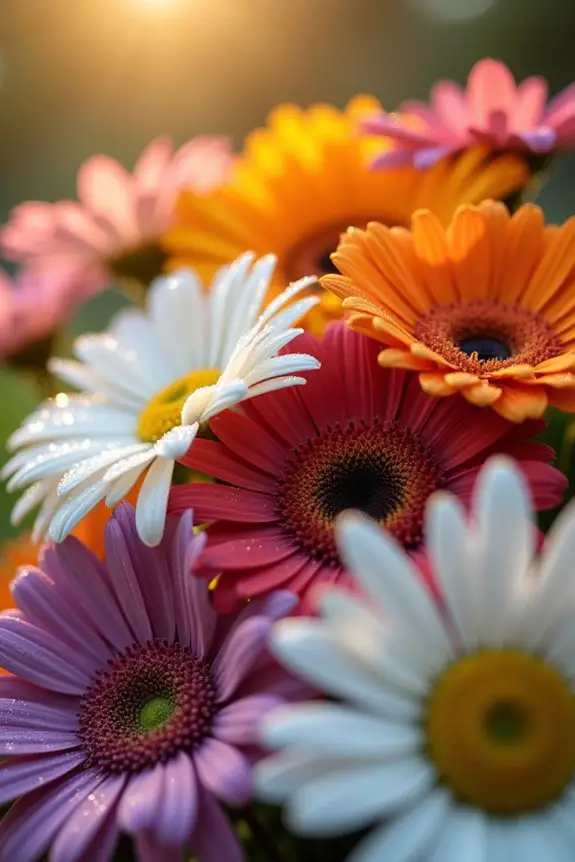
While Western traditions view daisies as symbols of innocence and new beginnings, these cheerful blooms carry remarkably different meanings around the world.
The cultural symbolism of daisies reveals fascinating flower folklore:
- Celtic communities believed daisies represented motherhood and childbirth, honoring the gentle strength of new mothers.
- Norse mythology connected daisies to Freya, the goddess of love, beauty, and fertility, celebrating feminine power.
- Victorian England used daisies in elaborate floral codes, where the blooms whispered messages of loyal love and pure devotion.
These diverse interpretations transform simple white petals into bridges between cultures, connecting humanity through nature’s timeless language.
Popular Questions
How Long Do Daisies Typically Bloom During the Growing Season?
While many flowers barely manage a few fleeting weeks, daisies ironically outlast their showier competitors with bloom duration spanning several months. Their seasonal growth typically produces continuous flowers from late spring through early fall, demonstrating remarkable endurance.
What Are the Best Soil Conditions for Growing Daisies at Home?
Daisies thrive in well-draining soil with a slightly acidic to neutral soil pH between 6.0 and 7.0. Proper drainage requirements include loose, sandy or loamy soil that prevents waterlogging, ensuring healthy root development and robust flowering throughout the season.
Can Daisies Survive in Cold Climates or Frost Conditions?
Like nature’s resilient soldiers, hardy varieties of daisies demonstrate impressive frost tolerance, surviving frigid temperatures below freezing. Shasta daisies and oxeye daisies particularly endure winter’s harsh embrace, returning vigorously each spring despite cold climates and frost conditions.
Are Daisies Safe for Pets Like Cats and Dogs to Eat?
Most daisy varieties pose mild toxicity risks to pets, causing digestive upset if ingested. Pet safety experts recommend keeping cats and dogs away from daisies, as consumption may trigger vomiting, diarrhea, or skin irritation in sensitive animals.
How Often Should I Water Daisies in My Garden?
Watering frequency for daisies typically requires deep soaking once or twice weekly, depending on climate and soil conditions. Proper garden maintenance includes checking soil moisture before watering, as established daisies tolerate some drought between waterings effectively.



